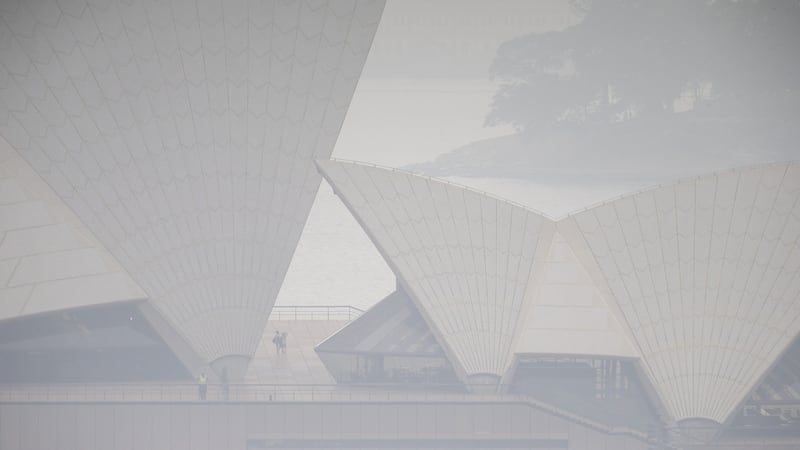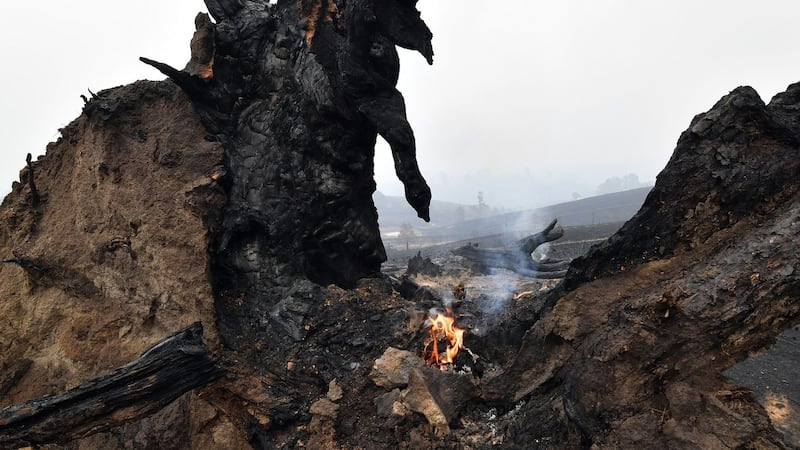Australian authorities warned people on Wednesday to prepare for another wave of evacuations as temperatures in the country’s southeast began to rise after a days-long cool spell, bringing the danger of revitalised blazes.
Firefighters have used the break from extreme heat and high winds to strengthen containment lines around several major fires, as the military continued efforts to provide supplies to thousands of people who have been left homeless.
Complicating the recovery effort, authorities have forecast another temperature spike as soon as Friday, with little rain, meaning a return to hazardous conditions.
"We are going to see some widespread severe fire danger, we are asking people to be ready," New South Wales (NSW) state Rural Fire Services Commissioner Shane Fitzsimmons told Sky News.
At least 26 people have died in bushfires in Australia since the summer season began in October. The death toll is highest in NSW, where 20 people, including three volunteer firefighters, have died since October. One person is still missing in New South Wales. South Australia has had three confirmed deaths and Victoria three.
More than 10.3 million hectares (25.5 million acres) of land - an area the size of South Korea - have been razed by bushfires that have killed 24 people in recent weeks.
Ecologists at the University of Sydney on Wednesday doubled their estimate of the number of animals killed or injured in the fires to 1 billion, as the UN World Meteorological Organization confirmed that smoke from the blazes has drifted as far as South America.
The three major cities in Australia's southeast, Sydney, Melbourne and the capital Canberra, were all blanketed in thick smoke, putting them among the most polluted cities in the world.

In rural areas, many towns were without power and telecommunications and some were running low on drinking water supplies.
The bushfires crisis follows a three-year drought that experts have linked to climate change and that has left much of the country’s bushland tinder-dry and vulnerable to fires.
The following are some highlights of what is happening in the Australian bushfires crisis:
* Prime minister Scott Morrison was visiting the popular holiday destination Kangaroo Island, of which a third has been burned, where is expected to announce a A$11 million relief package.
* Around 70 firefighters from the United States and Canada were due to land in Australia on Wednesday, joining scores of their compatriots already on the ground.
* In Victoria state, telecommunications company Telstra was working to reconnect several communities.
* Smoke from wildfires has drifted across the Pacific and affected cities in South America, and may have reached the Antarctic, the UN World Meteorological Organisation said.
* The fires have already emitted 400 megatonnes of carbon dioxide into the atmosphere and produced harmful pollutants, the EU’s Copernicus monitoring programme said.

* Moody’s Analytics said the cost of the fires could easily surpass that of the deadly 2009 Black Saturday fires that destroyed 450,000 hectares of land, which cost an estimated A$4.4 billion.
* There are 127 fires ablaze across New South Wale, with around 50 uncontained. All the fires were at the “advice” level, the lowest alert rating. Victoria state had 39 fires with 13 “watch and act” alerts.
* Mr Morrison has pledged A$2 billion to a newly created National Bushfire Recovery Agency.
* More than 100 military personnel were being deployed to help with clean-up efforts across the state.
* Emergency services have dismissed claims the fires are caused by environmentalists stopping controlled burn-offs. Rural fire services commissioner Fitzsimmons: “Hazard reduction burning is really challenging and the single biggest impediment to completing hazard reduction burning is the weather.”–Reuters and Guardian














